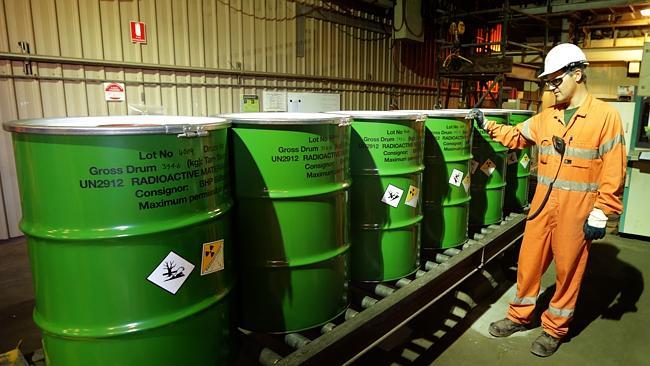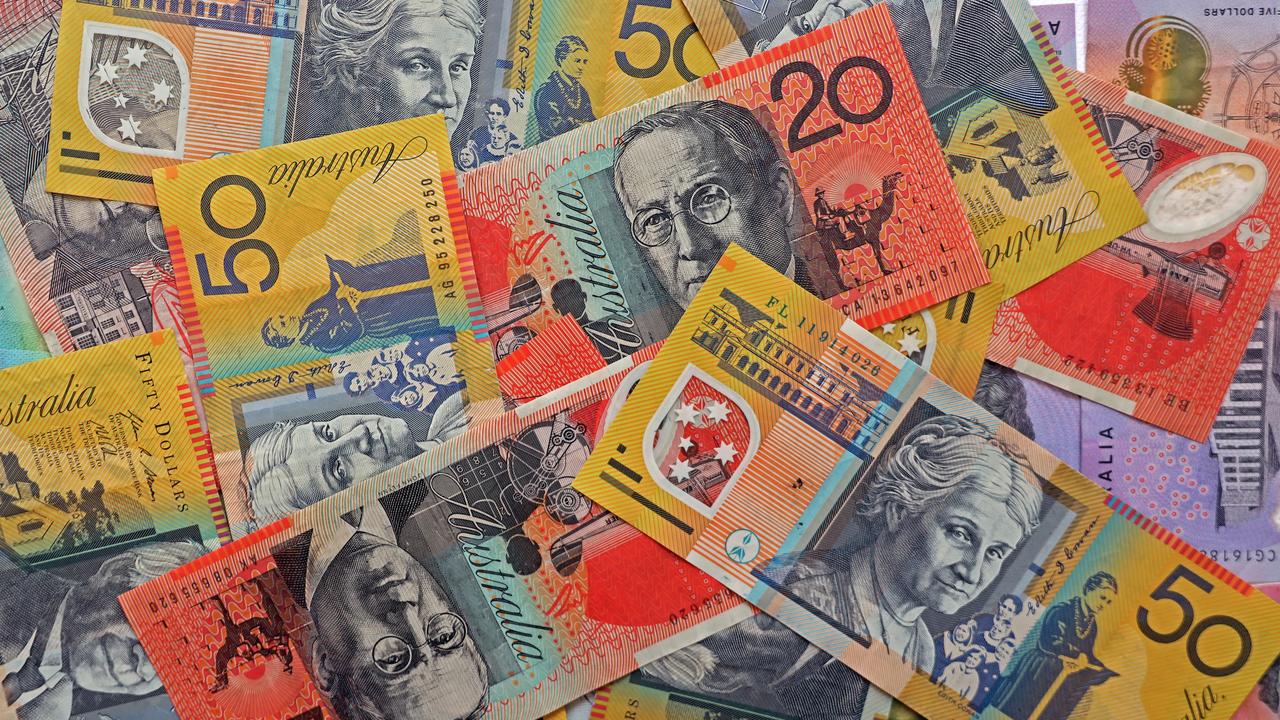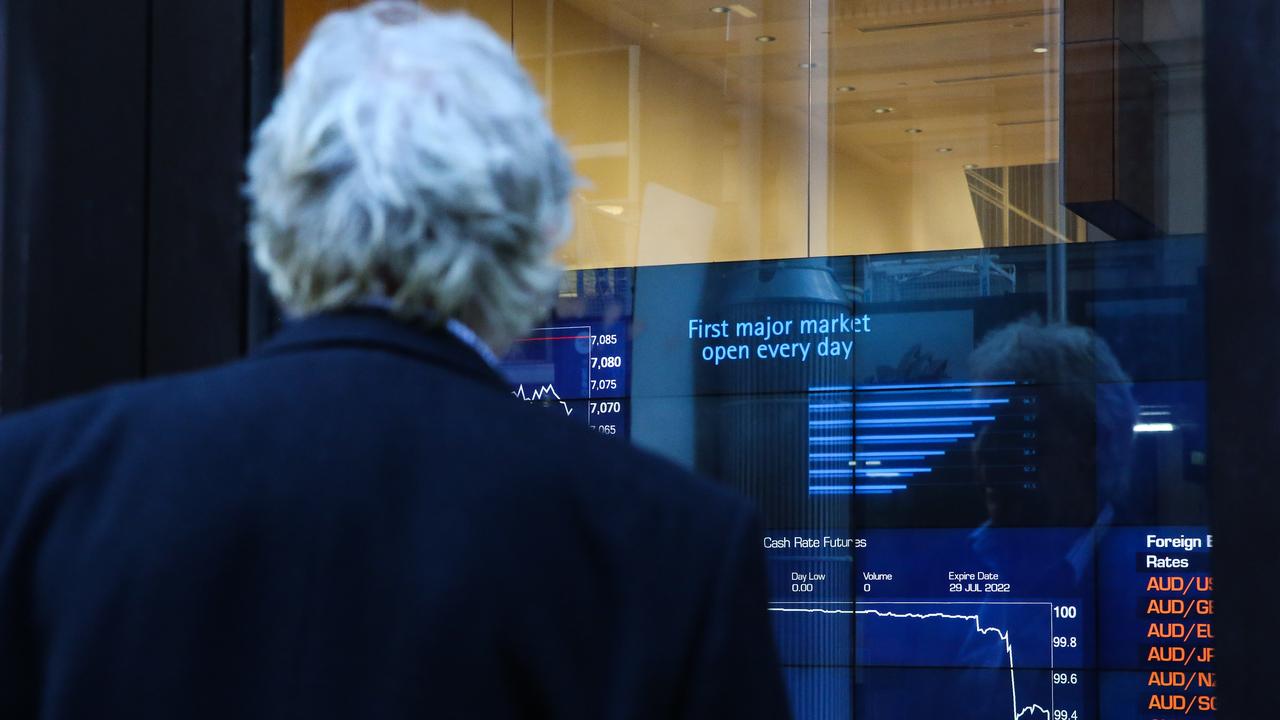Australia needs policy reform to milk $9.5 billion uranium cash cow, report argues
THIS controversial industry could add $9.5 billion and 20,000 jobs to our economy. Instead, we’re getting beaten by Kazakhstan.

Mining
Don't miss out on the headlines from Mining. Followed categories will be added to My News.
AUSTRALIA is sitting on a figurative gold mine of literal uranium, with a massive untapped opportunity to unlock an export boom and add thousands of jobs to the economy, a new report has argued.
The study, commissioned by the Minerals Council of Australia and conducted by RMIT University economists Sinclair Davidson and Ashton de Silva, found that under the right conditions, Australian uranium could generate as much as 5 per cent of the world’s electricity.
“This would be an outstanding contribution to global low-emissions electricity generation,” Minerals Council uranium executive director Daniel Zavattiero said.
Australia is sitting on about 30 per cent of the world’s uranium reserves but produces only 10 per cent of global production, making us the world’s third-largest exporter behind Kazakhstan and Canada.
The authors argue that, under the right policy settings, Australia’s could bring its share of global supply closer to 30 per cent.
That would grow the local industry from an estimated 3000 direct and indirect jobs and $600 million per annum in value to more than 20,000 jobs and $9.5 billion in value by 2040.
The authors said for that to happen the country needed policy reform to make it a more attractive uranium investment destination and a more competitive supplier.
“State and federal regulation need to be harmonised and simplified to ensure that uranium production and supply decisions are commercial decisions and not quasi-political decisions,” the authors write.
“Ensuring that the Australian uranium regulatory environment is world’s best practice and a commitment to grow Australia’s share of the global market to at least 30 per cent will maximise the value of the country’s uranium resource endowment to the Australian people.
“Having Australia play a larger role in the global nuclear economy will see greater economic benefit to both Australia and its trading partners.”
A poll released in 2014 showed that in South Australia — which holds about 80 per cent of Australia’s uranium — 55 per cent of residents supported uranium mining, 19.5 per cent were neutral and only 25.5 per cent were opposed.
The South Australian Government has set up the Nuclear Fuel Cycle Royal Commission into the feasibility of expanding the present level of exploration, extraction and milling in the state.
Mr Zavattiero said the climate debate was changing how nuclear power was seen around the world. “I don’t think the argument [against uranium mining] from the environmental groups is as clear-cut as it once was,” he said.
“If you look in Australia, we’ve seen some fairly steady reform. Western Australia has opened up for mining, bilateral agreements have been put in place with customer countries with bipartisan support in Canberra, and we’ve seen the calling of the royal commission in South Australia from a left-leaning Labor premier.”
The report argued the three key reforms would be to remove exploration and mining bans in states where bans exist; remove the dual state and federal government assessment and approval process which increases investor uncertainty and raises the cost of capital; and increase the number of ports through which uranium can be exported.
Japan’s Fukushima disaster hit global uranium prices, which have since recovered in the 2015 financial year to around $US37.75 a pound.
‘IT READS LIKE A CRY OF DESPAIR’
Greens Senator Scott Ludlam has slammed the report, describing even the low base scenario for worldwide demand as “ridiculously optimistic”.
“I really just hope that not too many people have printed it out because it’s a bit of a waste of paper,” he told news.com.au. “It reads like a 40-page cry of despair from a tiny handful of people who can’t work out what’s going wrong with the industry.”
Mr Ludlam argues uranium is a “peculiar commodity”, which is partly why investors in Australia are “so frequently wrong-footed”. “It’s not like getting into iron ore or copper where there are a range of suppliers and a reasonably dynamic market,” he said.
“The nuclear industry is just really peculiar. There are a relatively small number of countries that consume the stuff and record high levels of stockpiles in the wake of Japan offlining its entire fleet in 2011.”
He pointed to the annual World Nuclear Status Report, which summarises data on power plant operation, production and construction, as evidence the world was actually moving away from nuclear.
“The average age of the world’s reactor fleet is 28 or 29 years,” Mr Ludlam said.
“All those reactors that were built in the ‘70s and ‘80s are scheduled to close down in the next 10 or 15 years at most, and nobody’s building them in anything like the replacement numbers that will be needed — and that’s barring another Fukushima.”
He agreed the world was moving to a more carbon-constrained economy, but said the nuclear industry was being “absolutely eaten alive” by renewables.
“There’s a very fast-moving, rapidly growing competitor. Nukes are starting to look like the 1950s technology that they are. I would warn investors to stay well clear — a lot of people have been burnt over the years.”
Originally published as Australia needs policy reform to milk $9.5 billion uranium cash cow, report argues



